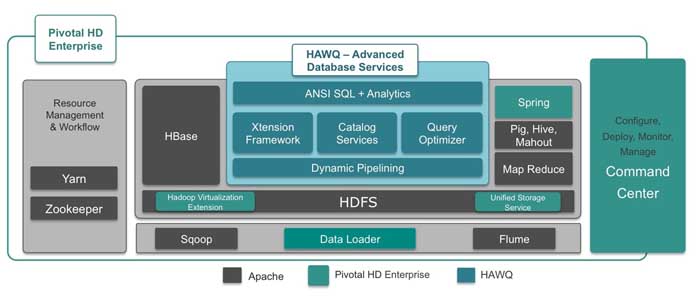House of Brick Principal Architect
On December 4, 2012, EMC and VMware released the initial details on a new group called the Pivotal Initiative. From the details released so far, the goal of Pivotal appears to be to construct a true Platform-as-a-Service (PaaS) for cloud-based application development. Former VMware CEO Paul Maritz was selected to lead Pivotal. GE has also decided to invest some capital into the project.
Interesting. What is this initiative all about?
Pivotal looks to be the separation of application infrastructure technologies from systems and platforms from VMware and EMC. The goal is to build the cloud-based software platform for the masses – both consumer and business.
VMware has amassed quite a few software offerings over the last decade that it are contributing to this initiative – including Cloud Foundry, SpringSource, Cetas, andGemstone. EMC is also contributing projects such as Greenplum. These are very robust projects, and their presence in Pivotal means business with data. Big business. Big data.
VMware and EMC seem to be splitting their application and infrastructure missions apart, and from my perspective, it is so they can achieve greater focus on each of the two stacks.
Pivotal One, their first PaaS entry into the market, was recently launched and is designed to integrate “data fabrics, programming frameworks and support for legacy infrastructures”. They have introduced a new buzzword by calling the platform “cloud-enabled application platform”, or (CEAP).
Pivotal is clearly targeting “Big Data”. Recently, Pivotal shipped Pivotal HD 1.0, which appears to be a customized version of the Apache Hadoop stack with HAWQ tightly integrated. This gives the users fully featured SQL query capabilities on top of Hadoop, which is a very powerful combination indeed.
From my data-centric perspective, some of the most exciting developments come with their data components, and almost all are centered on data analytics. Hadoop has certainly taken the industry by storm. Greenplum was constructed from the ground up to handle analytics on large datasets. VMware’s GemFire and SQLFire are also key contributions to Pivotal. Both work very well with the Spring framework that so many enterprise projects are built upon. The vFabric stack has also moved over to Pivotal, lending credence to the enterprise platform abilities. vFabric Hyperic is also present to add a monitoring hook into the stack.
One interesting note is while vFabric Postgres is under the Pivotal umbrella, I do not see the other data offerings currently supported by VMware’s vFabric Data Director, such as Oracle and SQL Server, included in the transition.
I am certainly interested to see how future integration of a number of these products helps continue to evolve the data analytics market!
The Pivotal initiative has certainly sparked my curiosity. Does anyone remember the launch of Microsoft Windows in the 1980’s where developers could now stop worrying about the platform their software ran on and focus on the application itself? Code to the Windows APIs and stop worrying about keystroke collection and interpretation, display methodologies, and underlying disk access. With Pivotal, could the next big shift in application development be to develop your applications to easily move into the cloud, where you no longer have to worry about things like availability, scalability, or redundancy? Only time will tell!







